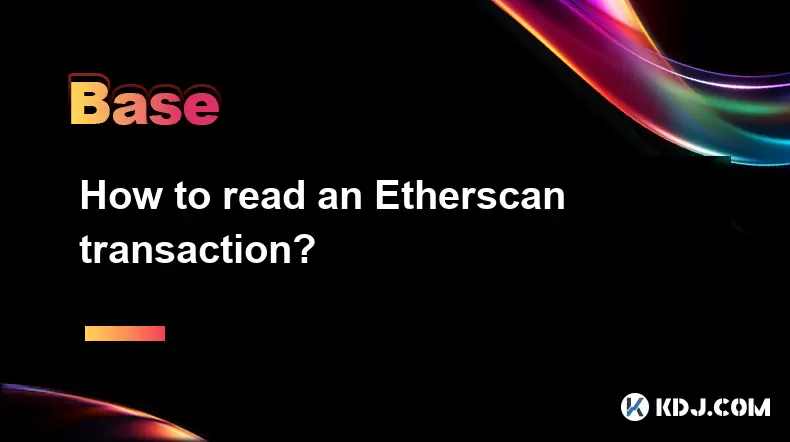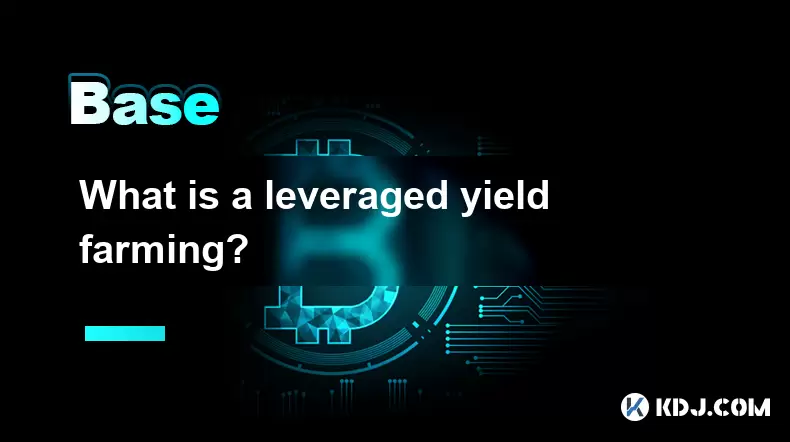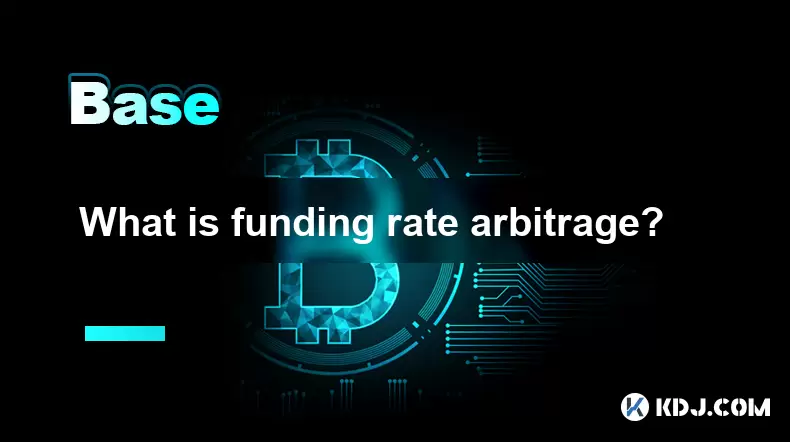-
 Bitcoin
Bitcoin $108,463.3266
-1.47% -
 Ethereum
Ethereum $2,535.8576
-3.62% -
 Tether USDt
Tether USDt $1.0006
0.02% -
 XRP
XRP $2.2352
-2.24% -
 BNB
BNB $658.1049
-0.63% -
 Solana
Solana $149.9207
-2.53% -
 USDC
USDC $0.9998
-0.07% -
 TRON
TRON $0.2857
0.45% -
 Dogecoin
Dogecoin $0.1659
-4.24% -
 Cardano
Cardano $0.5784
-3.85% -
 Hyperliquid
Hyperliquid $38.4944
-4.70% -
 Sui
Sui $2.9107
-4.19% -
 Bitcoin Cash
Bitcoin Cash $485.3637
-3.32% -
 Chainlink
Chainlink $13.3074
-4.18% -
 UNUS SED LEO
UNUS SED LEO $9.0499
0.41% -
 Avalanche
Avalanche $18.0347
-3.98% -
 Stellar
Stellar $0.2394
-2.23% -
 Toncoin
Toncoin $2.8110
-2.68% -
 Shiba Inu
Shiba Inu $0.0...01155
-3.23% -
 Litecoin
Litecoin $87.7967
-3.87% -
 Hedera
Hedera $0.1555
-2.87% -
 Monero
Monero $317.3839
-1.79% -
 Polkadot
Polkadot $3.4144
-4.90% -
 Dai
Dai $1.0000
-0.02% -
 Ethena USDe
Ethena USDe $1.0003
0.00% -
 Bitget Token
Bitget Token $4.4734
-2.29% -
 Uniswap
Uniswap $7.2556
-6.53% -
 Pepe
Pepe $0.0...09693
-7.27% -
 Aave
Aave $267.0924
-4.81% -
 Pi
Pi $0.4834
-3.31%
How to read an Etherscan transaction?
Etherscan lets you track Ethereum transactions by hash, showing details like sender, receiver, value, gas fees, and token transfers.
Jul 03, 2025 at 11:50 pm

Understanding the Basics of Etherscan Transactions
Etherscan is a blockchain explorer specifically designed for the Ethereum network. It allows users to track transactions, check wallet balances, and explore smart contracts. When you receive or send ETH or ERC-20 tokens, a corresponding transaction record is generated on the Ethereum blockchain, which can be viewed using Etherscan.
To begin reading a transaction, you first need the transaction hash (TXN Hash) — this unique identifier is usually provided by your wallet or exchange after a transaction is initiated. Once you have this hash, navigate to https://etherscan.io/ and paste it into the search bar. This will bring up a detailed breakdown of the transaction.
Decoding the Transaction Overview Section
Once you're on the transaction page, the Overview section provides a high-level summary. Here’s what you should look for:
- Transaction Hash: This is the unique ID of the transaction.
- Status: Displays whether the transaction was successful or failed. A green checkmark indicates success, while a red cross means failure.
- From / To: Shows the sender and receiver addresses. Clicking on these will take you to the respective wallet pages.
- Value: Indicates how much ETH or token was transferred.
- Transaction Fee (Gas Used by Transaction): This shows how much gas was spent in ETH.
Each of these fields helps you understand the core details of the transaction without diving too deep.
Analyzing the Details Tab
The Details tab offers more technical information about the transaction. Key elements include:
- Nonce: A counter used to ensure each transaction from an address is processed only once.
- Gas Price: The amount of ETH paid per unit of gas, measured in Gwei.
- Gas Limit: The maximum amount of gas the sender is willing to pay for the transaction.
- Input Data: If the transaction involves interacting with a smart contract, this field will show the encoded function call and parameters.
Understanding these values helps you verify if the transaction was executed correctly and efficiently.
Interpreting the Contract Interaction (if applicable)
If the transaction involves interaction with a smart contract, such as swapping tokens on a decentralized exchange like Uniswap, the Contract tab becomes important. It will display:
- Whether the contract has been verified (which enhances transparency).
- The decoded function call made during the transaction.
- Event logs that provide insights into what actions were triggered within the contract.
For example, when transferring ERC-20 tokens, the event log may show a Transfer event indicating the amount sent and received by specific addresses.
This part is especially useful for developers or advanced users who want to debug or validate contract behavior.
Checking Internal Transactions and Token Transfers
Some transactions trigger internal transactions, which are not actual blockchain transactions but operations initiated by a contract. These can be found under the Internal Txns tab. They might represent token transfers or other contract interactions that occurred as a result of the main transaction.
Under the Token Transfers tab, you’ll see a list of all ERC-20, ERC-721, or ERC-1155 token movements associated with the transaction. Each entry includes:
- The token name and symbol.
- The amount transferred.
- The from and to addresses.
- The contract address of the token.
This section is crucial for verifying token-based activities such as NFT purchases or stablecoin transfers.
Frequently Asked Questions
- What does a failed transaction mean on Etherscan?
A failed transaction indicates that the operation did not complete successfully. This could happen due to insufficient gas, a contract error, or invalid inputs. Even though the transaction failed, the gas fee is still deducted because computational resources were used. - How do I know if my transaction has been confirmed?
You can check the number of confirmations listed next to the block confirmation time. Typically, 12 confirmations are considered secure on the Ethereum network. - Can I cancel a transaction once it's broadcasted?
If the transaction is pending, you may attempt to cancel it by sending another transaction with the same nonce and higher gas price. However, once a transaction is included in a block, it cannot be canceled. - Why do some transactions have multiple entries under Token Transfers?
This often occurs when a single transaction interacts with multiple tokens or when a contract performs several token transfer operations in one go, such as swapping multiple assets on a DEX.
Disclaimer:info@kdj.com
The information provided is not trading advice. kdj.com does not assume any responsibility for any investments made based on the information provided in this article. Cryptocurrencies are highly volatile and it is highly recommended that you invest with caution after thorough research!
If you believe that the content used on this website infringes your copyright, please contact us immediately (info@kdj.com) and we will delete it promptly.
- Bitcoin's Pattern Break: Are HODLers the Key to the Next Surge?
- 2025-07-04 18:50:12
- Bitcoin Price, Trump's Bill, and the $150K Dream: A NYC Take
- 2025-07-04 19:50:12
- Ethereum, LILPEPE, and the July Bounce: Will Pepe Steal ETH's Thunder?
- 2025-07-04 19:10:12
- Binance Institutional Loans: Unlocking 4x Leverage and Zero Interest for Whales
- 2025-07-04 19:15:12
- Bitcoin Bull Run: Analysts Eye Peak in Late 2025?
- 2025-07-04 19:20:13
- Pepe Indicators, Bullish Forecast: Can the Meme Coin Rally?
- 2025-07-04 19:25:12
Related knowledge

What is a user-generated content (UGC) NFT platform?
Jul 04,2025 at 01:49pm
Understanding the Concept of a UGC NFT PlatformA user-generated content (UGC) NFT platform is a digital marketplace or ecosystem where users can create, mint, and trade non-fungible tokens (NFTs) that represent ownership of original digital content they produce. Unlike traditional NFT platforms where creators often include professional artists or develo...

What is a token generation event (TGE)?
Jul 04,2025 at 07:14am
Understanding the Basics of a Token Generation Event (TGE)A Token Generation Event (TGE) refers to the process through which a blockchain project creates and distributes its native tokens to investors, participants, or stakeholders. This event is often associated with new cryptocurrency projects launching on platforms like Ethereum, Binance Smart Chain,...

What is a block explorer API?
Jul 04,2025 at 05:07am
Understanding the Role of a Block Explorer APIA block explorer API is a crucial interface that enables developers and users to interact programmatically with blockchain data. Unlike traditional APIs used in web services, a block explorer API specifically provides access to blockchain-related information such as transaction details, wallet balances, bloc...

What is a leveraged yield farming?
Jul 04,2025 at 09:36am
Understanding Leveraged Yield FarmingLeveraged yield farming is a more advanced form of yield farming, which itself is a popular method in the decentralized finance (DeFi) ecosystem to earn returns by providing liquidity to various protocols. In traditional yield farming, users deposit tokens into a DeFi platform and earn rewards in return, often in the...

What is open interest in derivatives?
Jul 03,2025 at 02:49pm
Understanding Open Interest in DerivativesOpen interest is a critical metric used in the cryptocurrency derivatives market, particularly when analyzing futures and options contracts. It represents the total number of outstanding contracts that have not been settled or closed by either party involved. Unlike trading volume, which counts all trades made i...

What is funding rate arbitrage?
Jul 04,2025 at 11:43am
Understanding Funding Rate Arbitrage in the Cryptocurrency MarketFunding rate arbitrage is a trading strategy employed by crypto traders to exploit differences in funding rates across various perpetual futures exchanges. In perpetual contracts, funding rates are periodic payments made between long and short traders depending on whether the price of the ...

What is a user-generated content (UGC) NFT platform?
Jul 04,2025 at 01:49pm
Understanding the Concept of a UGC NFT PlatformA user-generated content (UGC) NFT platform is a digital marketplace or ecosystem where users can create, mint, and trade non-fungible tokens (NFTs) that represent ownership of original digital content they produce. Unlike traditional NFT platforms where creators often include professional artists or develo...

What is a token generation event (TGE)?
Jul 04,2025 at 07:14am
Understanding the Basics of a Token Generation Event (TGE)A Token Generation Event (TGE) refers to the process through which a blockchain project creates and distributes its native tokens to investors, participants, or stakeholders. This event is often associated with new cryptocurrency projects launching on platforms like Ethereum, Binance Smart Chain,...

What is a block explorer API?
Jul 04,2025 at 05:07am
Understanding the Role of a Block Explorer APIA block explorer API is a crucial interface that enables developers and users to interact programmatically with blockchain data. Unlike traditional APIs used in web services, a block explorer API specifically provides access to blockchain-related information such as transaction details, wallet balances, bloc...

What is a leveraged yield farming?
Jul 04,2025 at 09:36am
Understanding Leveraged Yield FarmingLeveraged yield farming is a more advanced form of yield farming, which itself is a popular method in the decentralized finance (DeFi) ecosystem to earn returns by providing liquidity to various protocols. In traditional yield farming, users deposit tokens into a DeFi platform and earn rewards in return, often in the...

What is open interest in derivatives?
Jul 03,2025 at 02:49pm
Understanding Open Interest in DerivativesOpen interest is a critical metric used in the cryptocurrency derivatives market, particularly when analyzing futures and options contracts. It represents the total number of outstanding contracts that have not been settled or closed by either party involved. Unlike trading volume, which counts all trades made i...

What is funding rate arbitrage?
Jul 04,2025 at 11:43am
Understanding Funding Rate Arbitrage in the Cryptocurrency MarketFunding rate arbitrage is a trading strategy employed by crypto traders to exploit differences in funding rates across various perpetual futures exchanges. In perpetual contracts, funding rates are periodic payments made between long and short traders depending on whether the price of the ...
See all articles

























































































